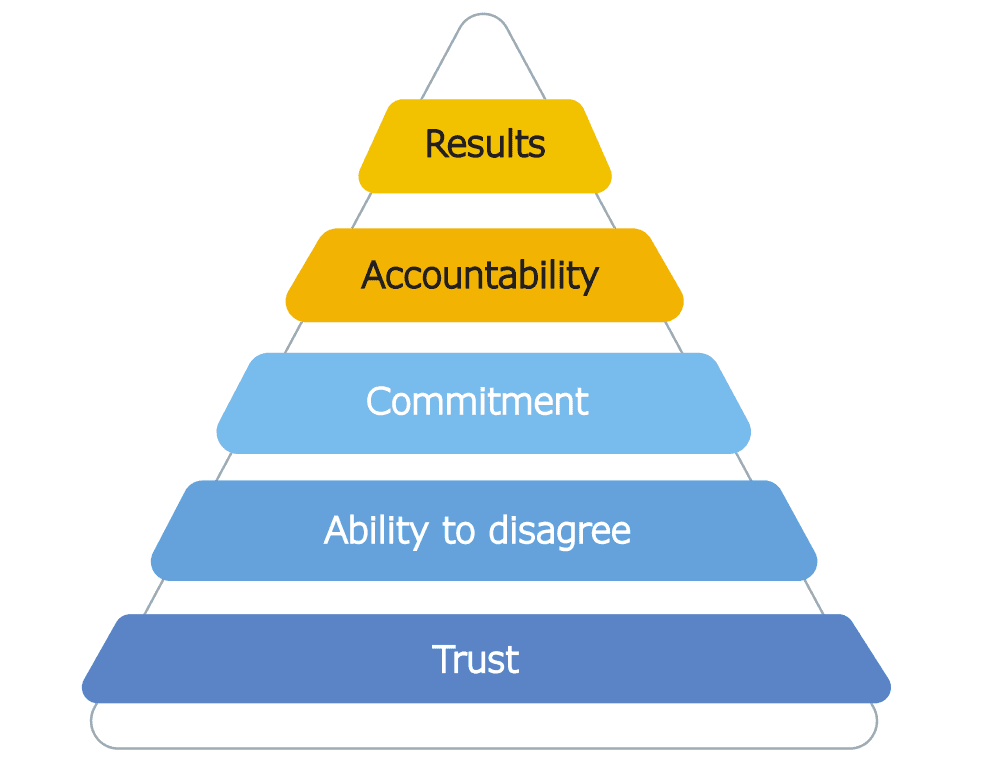
I rediscovered P. Lencioni’s model on team cohesion and it was a 💡Aha💡 moment.
It’s fascinating how sometimes you reread a book or rediscover a topic and suddenly it clicks, even though you weren’t particularly drawn to it before. Recently, we supported a team facing significant challenges. I wondered what more we could have done and delved back into the book: ‘The Five Dysfunctions of a Team’ by Patrick Lencioni. Ideas started flowing: solutions shared with the team in question, creation of new tools, a new way to set the framework, etc.
This model is so powerful that I want to share its principles here.
To have a cohesive team, there needs to be trust. Real trust where you know that if you don’t show your best side, the other person won’t hold it against you.
Because without trust, things aren’t said. You keep your opinions to yourself and complain outside of meetings. Yet, disagreements and debates are important. Everyone needs to be able to express their point of view freely and not be afraid of conflict. It’s about daring to confront so that all viewpoints can be crossed. This is also how information circulates.
Without debates, it’s impossible to commit to decisions. You are more likely to follow a decision when you understand it and have been able to give your opinion, even if you don’t agree with it.
If you don’t commit to a decision, you can’t be held accountable if you don’t implement it since you haven’t shown your agreement. Everyone will then work as they see fit. Yet, it’s important for team members to be able to address the fact that a decision wasn’t followed without necessarily having to go through a leader-arbiter. And this doesn’t mean making accusations. For example, if you kindly ask your colleague: “I was supposed to receive report X this morning. Is there a problem? Can I help?”, mutual aid is reinforced.
If you aren’t held accountable for decisions, it’s impossible to have a high-performing team since everyone works towards their personal goals rather than serving the team to achieve common results. Like a boat where everyone rows in a different direction, it can’t move forward.
What common sense, right? So before talking about vision for the company, ask yourself where the trust stands. Because if trust isn’t there, your teams won’t follow your vision and you will have made nice slides for nothing. 😉
I am so excited about Lencioni’s model that I can’t stop talking about it, much to my partner’s regret. So, I want to write a series of topics on it. Stay tuned for the next episode to discuss how to strengthen TRUST.
